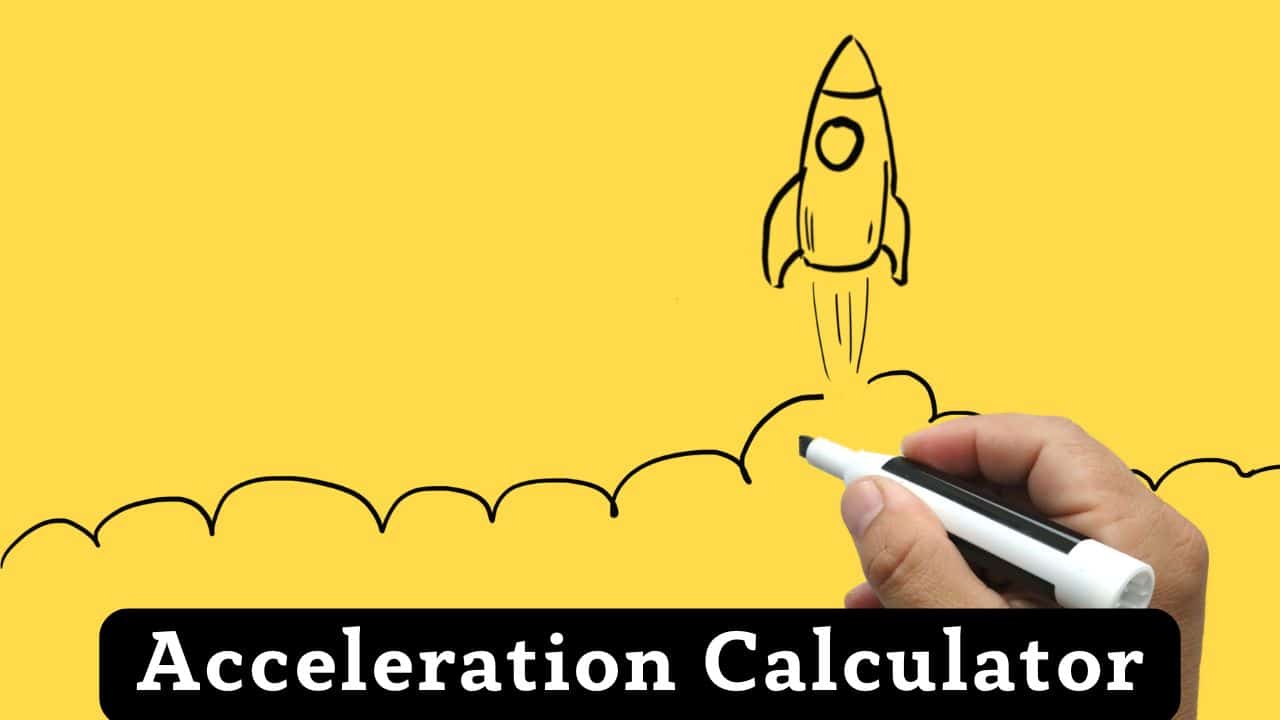
Acceleration & Motion Physics
Master the fundamentals of acceleration, forces, and kinematic motion in physics!
What is Acceleration and Why is it Important?
Acceleration is a vector quantity that describes the rate of change of velocity with respect to time. It tells us how quickly an object’s velocity is changing, including both magnitude and direction changes.
Why acceleration matters: Acceleration is fundamental to understanding forces, predicting motion, analyzing safety systems, and designing everything from vehicles to spacecraft.
Types of Acceleration:
- Linear Acceleration: Change in velocity along a straight line
- Centripetal Acceleration: Acceleration toward the center of circular motion
- Angular Acceleration: Rate of change of angular velocity
- Gravitational Acceleration: Acceleration due to gravity (9.81 m/s²)
- Tangential Acceleration: Acceleration tangent to a curved path
- Uniform Acceleration: Constant acceleration over time
The Physics of Acceleration and Forces
Newton’s Laws of Motion form the foundation of acceleration physics, connecting forces, mass, and acceleration in fundamental relationships.
Fundamental Acceleration Equations:
Linear Acceleration:
a = (v – u) / t
Change in velocity divided by time
Newton’s Second Law:
F = ma or a = F / m
Force equals mass times acceleration
Centripetal Acceleration:
a = v² / r
Acceleration toward center of circular motion
Angular Acceleration:
α = (ω – ω₀) / t
Rate of change of angular velocity
Kinematic Equation:
s = ut + ½at²
Displacement with constant acceleration
Velocity-Acceleration Relation:
v² = u² + 2as
Final velocity from acceleration and displacement
Key Physics Principles:
- Vector Nature: Acceleration has both magnitude and direction
- Force Relationship: Acceleration is directly proportional to net force
- Mass Dependence: Acceleration is inversely proportional to mass
- Reference Frame: Acceleration is measured relative to an inertial frame
- Instantaneous vs Average: Acceleration can vary with time
- Conservation Laws: Energy and momentum conservation in accelerated motion
Circular Motion and Centripetal Acceleration
Circular motion involves continuous acceleration toward the center of the circular path, even when speed is constant. This centripetal acceleration is essential for understanding rotational systems.
Circular Motion Parameters:
| Parameter | Formula | Units | Description | Example |
|---|---|---|---|---|
| Centripetal Acceleration | a = v²/r | m/s² | Acceleration toward center | Car turning corner |
| Angular Velocity | ω = v/r | rad/s | Rate of angular change | Wheel rotation |
| Angular Acceleration | α = Δω/Δt | rad/s² | Rate of angular velocity change | Motor startup |
| Period | T = 2πr/v | s | Time for one revolution | Earth’s rotation |
| Frequency | f = 1/T | Hz | Revolutions per second | Engine RPM |
| Centripetal Force | F = ma = mv²/r | N | Force toward center | Tension in string |
Force Analysis and Newton’s Laws
Force analysis using Newton’s laws allows us to predict and understand acceleration in complex systems with multiple forces acting simultaneously.
Force and Acceleration Relationships:
| Scenario | Key Equation | Forces Involved | Acceleration Type | Example |
|---|---|---|---|---|
| Free Fall | a = g = 9.81 m/s² | Gravity only | Constant downward | Dropped object |
| Inclined Plane | a = g sin θ | Gravity component | Down the slope | Ball rolling down ramp |
| Friction | a = (F – f) / m | Applied force, friction | Reduced acceleration | Car braking |
| Circular Motion | a = v² / r | Centripetal force | Toward center | Satellite orbit |
| Projectile Motion | ax = 0, ay = -g | Gravity only | Parabolic path | Thrown ball |
| Rocket Propulsion | a = (F – mg) / m | Thrust, gravity | Variable acceleration | Space launch |
Practice Problems and Worked Solutions
Problem 1: Linear Acceleration
Question: A car accelerates from 20 m/s to 35 m/s in 5 seconds. What is its acceleration?
Click to see detailed solution
Given: u = 20 m/s, v = 35 m/s, t = 5 s
Formula: a = (v – u) / t
Calculation: a = (35 – 20) / 5 = 15 / 5 = 3 m/s²
Answer: Acceleration = 3 m/s²
Problem 2: Force and Acceleration
Question: A 1500 kg car experiences a net force of 4500 N. What is its acceleration?
Click to see detailed solution
Given: F = 4500 N, m = 1500 kg
Formula: a = F / m (Newton’s Second Law)
Calculation: a = 4500 / 1500 = 3 m/s²
Answer: Acceleration = 3 m/s²
Problem 3: Centripetal Acceleration
Question: A car travels at 25 m/s around a circular track with radius 100 m. Find the centripetal acceleration.
Click to see detailed solution
Given: v = 25 m/s, r = 100 m
Formula: a = v² / r
Calculation: a = (25)² / 100 = 625 / 100 = 6.25 m/s²
Answer: Centripetal acceleration = 6.25 m/s² toward center
Problem 4: Angular Acceleration
Question: A wheel accelerates from 10 rad/s to 30 rad/s in 4 seconds. Find the angular acceleration.
Click to see detailed solution
Given: ω₀ = 10 rad/s, ω = 30 rad/s, t = 4 s
Formula: α = (ω – ω₀) / t
Calculation: α = (30 – 10) / 4 = 20 / 4 = 5 rad/s²
Answer: Angular acceleration = 5 rad/s²
